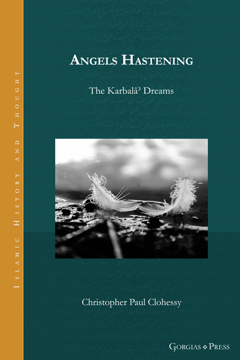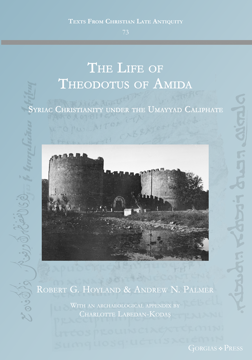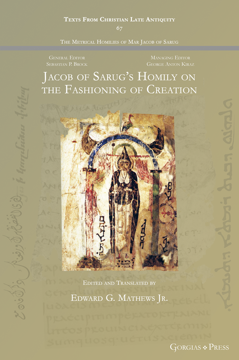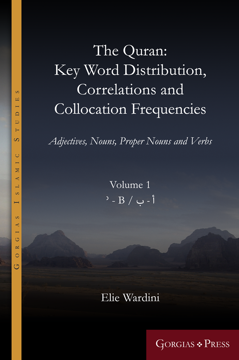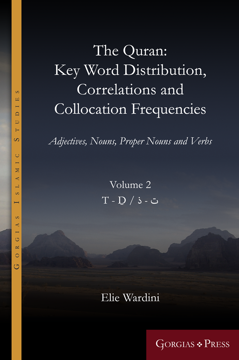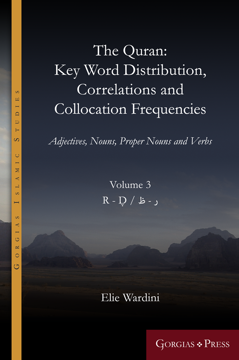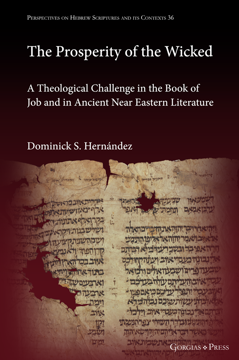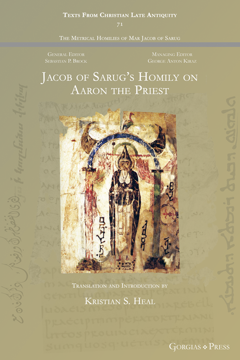Angels Hastening (paperback)
The Karbalāʾ Dreams
Series: Islamic History and Thought 22
ISBN: 978-1-4632-4408-8
When, on an autumn Medina night in 61/680, the night that saw al-Ḥusayn killed, Umm Salama was torn from her sleep by an apparition of a long-dead Muḥammad, she slipped effortlessly into a progression of her co-religionists who, irrespective of status, gender or standing with God, were the recipients of dark and arresting visions. At the core of those Delphian dreams, peopled by angels or ğinn or esteemed forbears and textured with Iraqi dust and martyrs’ blood, was the Karbalāʾ event. Her dream would be recounted by an array of Muslim scholars, from al-Tirmiḏī, stellar pupil of al-Buḫārī, and Ibn ʿAsākir, untiring chronicler of Syrian history, to bibliophile theologian Ibn Ṭāʾūs and Egyptian polymath al-Suyūṭī. But this was not Umm Salama’s only otherworldly encounter and she was not the only one to have al-Ḥusayn’s fate disturb her nights. This is their story.
$48.00 (USD) $28.80 (USD)
The Life of Theodotus of Amida
Syriac Christianity under the Umayyad Caliphate
Series: Texts from Christian Late Antiquity 73
ISBN: 978-1-4632-4409-5
The Life of Theodotus of Amida is that rare thing: a securely dated eye-witness account of life under Arab Muslim rule in the first century of Islam, and one of the few extant texts from seventh-century North Mesopotamia. It is imbued with local color and contemporary detail, revealing an intimate knowledge of the terrain, its inhabitants and officialdom, as well as the precariousness of the lives of those living in the borderlands between the Byzantine and Islamic empires.
$75.00 (USD) $45.00 (USD)
Jacob of Sarug's Homily on the Fashioning of Creation (hardcover)
Edited and Translated by Edward G Mathews Jr
ISBN: 978-1-4632-4413-2
The long memra translated here in this volume presents the seven parts of the homily on Creation in a single volume.
$76.00 (USD) $45.60 (USD)
The Quran. Key Word Distribution, Correlations and Collocation Frequencies. Vol. 1
Adjectives, Nouns, Proper Nouns and Verbs
By Elie Wardini
Series: Gorgias Islamic Studies 16
ISBN: 978-1-4632-4414-9
The aim with the present series, The Quran: Key Word Distribution, Correlations and Collocation Frequencies, is to present key data related to the lexicon of the Quran, in terms of Key Word distribution and lexical associations. The digital text used for this purpose is the Uthmani text of the Tanzil Quran Text. This text is widely used. All vocalized Arabic text is quoted unaltered in any shape or form from the Tanzil text. Unvocalized Arabic text and transcriptions are my own. In this series, each Key Word, here adjectives, nouns, proper nouns and verbs, is presented together with the following key data: Degree of Concentration, Weighted Distribution, Correlations and Collocation Frequencies. The Key Words are always referenced by their lemma and are sorted alphabetically according to Arabic and UNICODE order. In lemmatizing the words, no attention has been given to the semantics of each word. Only on rare occasion have similar forms of words or proper nouns been separated in order to avoid confusion. In assigning each word a lemma, Classical dictionaries and Quran commentaries, as well as modern Quran dictionaries have been consulted. Deciding on these is not always obvious, since classical dictionaries and commentaries sometimes either disagree or present divergent variant readings or root and lemma attributions. It is our hope and aim that this series contributes to Computational Linguistics and Digital Humanities in general, and Computational Linguistics research on the Quran in particular.
$206.00 (USD) $123.60 (USD)
The Quran. Key Word Distribution, Correlations and Collocation Frequencies. Vol. 2
Adjectives, Nouns, Proper Nouns and Verbs
By Elie Wardini
Series: Gorgias Islamic Studies 16
ISBN: 978-1-4632-4416-3
The aim with the present series, The Quran: Key Word Distribution, Correlations and Collocation Frequencies, is to present key data related to the lexicon of the Quran, in terms of Key Word distribution and lexical associations. The digital text used for this purpose is the Uthmani text of the Tanzil Quran Text. This text is widely used. All vocalized Arabic text is quoted unaltered in any shape or form from the Tanzil text. Unvocalized Arabic text and transcriptions are my own. In this series, each Key Word, here adjectives, nouns, proper nouns and verbs, is presented together with the following key data: Degree of Concentration, Weighted Distribution, Correlations and Collocation Frequencies. The Key Words are always referenced by their lemma and are sorted alphabetically according to Arabic and UNICODE order. In lemmatizing the words, no attention has been given to the semantics of each word. Only on rare occasion have similar forms of words or proper nouns been separated in order to avoid confusion. In assigning each word a lemma, Classical dictionaries and Quran commentaries, as well as modern Quran dictionaries have been consulted. Deciding on these is not always obvious, since classical dictionaries and commentaries sometimes either disagree or present divergent variant readings or root and lemma attributions. It is our hope and aim that this series contributes to Computational Linguistics and Digital Humanities in general, and Computational Linguistics research on the Quran in particular.
$179.00 (USD) $107.40 (USD)
The Quran. Key Word Distribution, Correlations and Collocation Frequencies. Vol. 3
Adjectives, Nouns, Proper Nouns and Verbs
By Elie Wardini
Series: Gorgias Islamic Studies 16
ISBN: 978-1-4632-4418-7
The aim with the present series, The Quran: Key Word Distribution, Correlations and Collocation Frequencies, is to present key data related to the lexicon of the Quran, in terms of Key Word distribution and lexical associations. The digital text used for this purpose is the Uthmani text of the Tanzil Quran Text. This text is widely used. All vocalized Arabic text is quoted unaltered in any shape or form from the Tanzil text. Unvocalized Arabic text and transcriptions are my own. In this series, each Key Word, here adjectives, nouns, proper nouns and verbs, is presented together with the following key data: Degree of Concentration, Weighted Distribution, Correlations and Collocation Frequencies. The Key Words are always referenced by their lemma and are sorted alphabetically according to Arabic and UNICODE order. In lemmatizing the words, no attention has been given to the semantics of each word. Only on rare occasion have similar forms of words or proper nouns been separated in order to avoid confusion. In assigning each word a lemma, Classical dictionaries and Quran commentaries, as well as modern Quran dictionaries have been consulted. Deciding on these is not always obvious, since classical dictionaries and commentaries sometimes either disagree or present divergent variant readings or root and lemma attributions. It is our hope and aim that this series contributes to Computational Linguistics and Digital Humanities in general, and Computational Linguistics research on the Quran in particular.
$179.00 (USD) $107.40 (USD)
The Quran. Key Word Distribution, Correlations and Collocation Frequencies. Vol. 4
Adjectives, Nouns, Proper Nouns and Verbs
By Elie Wardini
Series: Gorgias Islamic Studies 16
ISBN: 978-1-4632-4420-0
The aim with the present series, The Quran: Key Word Distribution, Correlations and Collocation Frequencies, is to present key data related to the lexicon of the Quran, in terms of Key Word distribution and lexical associations. The digital text used for this purpose is the Uthmani text of the Tanzil Quran Text. This text is widely used. All vocalized Arabic text is quoted unaltered in any shape or form from the Tanzil text. Unvocalized Arabic text and transcriptions are my own. In this series, each Key Word, here adjectives, nouns, proper nouns and verbs, is presented together with the following key data: Degree of Concentration, Weighted Distribution, Correlations and Collocation Frequencies. The Key Words are always referenced by their lemma and are sorted alphabetically according to Arabic and UNICODE order. In lemmatizing the words, no attention has been given to the semantics of each word. Only on rare occasion have similar forms of words or proper nouns been separated in order to avoid confusion. In assigning each word a lemma, Classical dictionaries and Quran commentaries, as well as modern Quran dictionaries have been consulted. Deciding on these is not always obvious, since classical dictionaries and commentaries sometimes either disagree or present divergent variant readings or root and lemma attributions. It is our hope and aim that this series contributes to Computational Linguistics and Digital Humanities in general, and Computational Linguistics research on the Quran in particular.
$189.00 (USD) $113.40 (USD)
The Quran. Key Word Distribution, Correlations and Collocation Frequencies. Vol. 5
Adjectives, Nouns, Proper Nouns and Verbs
By Elie Wardini
Series: Gorgias Islamic Studies 16
ISBN: 978-1-4632-4422-4
The aim with the present series, The Quran: Key Word Distribution, Correlations and Collocation Frequencies, is to present key data related to the lexicon of the Quran, in terms of Key Word distribution and lexical associations. The digital text used for this purpose is the Uthmani text of the Tanzil Quran Text. This text is widely used. All vocalized Arabic text is quoted unaltered in any shape or form from the Tanzil text. Unvocalized Arabic text and transcriptions are my own. In this series, each Key Word, here adjectives, nouns, proper nouns and verbs, is presented together with the following key data: Degree of Concentration, Weighted Distribution, Correlations and Collocation Frequencies. The Key Words are always referenced by their lemma and are sorted alphabetically according to Arabic and UNICODE order. In lemmatizing the words, no attention has been given to the semantics of each word. Only on rare occasion have similar forms of words or proper nouns been separated in order to avoid confusion. In assigning each word a lemma, Classical dictionaries and Quran commentaries, as well as modern Quran dictionaries have been consulted. Deciding on these is not always obvious, since classical dictionaries and commentaries sometimes either disagree or present divergent variant readings or root and lemma attributions. It is our hope and aim that this series contributes to Computational Linguistics and Digital Humanities in general, and Computational Linguistics research on the Quran in particular.
$199.00 (USD) $119.40 (USD)
The Prosperity of the Wicked
A Theological Challenge in the Book of Job and in Ancient Near Eastern Literature
ISBN: 978-1-4632-4424-8
Does Job convincingly argue against a fixed system of just retribution by proclaiming the prosperity of the wicked—an assertion that distinctly runs contrary to traditional biblical and ancient Near Eastern wisdom? This study addresses this question, giving careful consideration to the rhetoric, imagery, and literary devices used to treat the issue of the fate of the wicked in Job’s first two rounds of dialogue, where the topic is predominantly disputed. The analysis will glean from related biblical and non-biblical texts in order to expose how Job deals with this fascinating subject and reveal the grandeur of the composition.
$114.95 (USD) $68.97 (USD)
Jacob of Sarug's Homily on Aaron the Priest
Translation and Introduction by Kristian S. Heal
Series: Texts from Christian Late Antiquity 71
ISBN: 978-1-4632-4427-9
Jacob of Sarug's homily on Aaron the Priest, focusing on the period leading up to and including the death of Aaron described in Numbers 20:22–29.
$32.00 (USD) $19.20 (USD)
